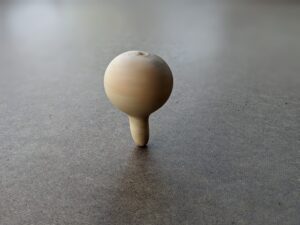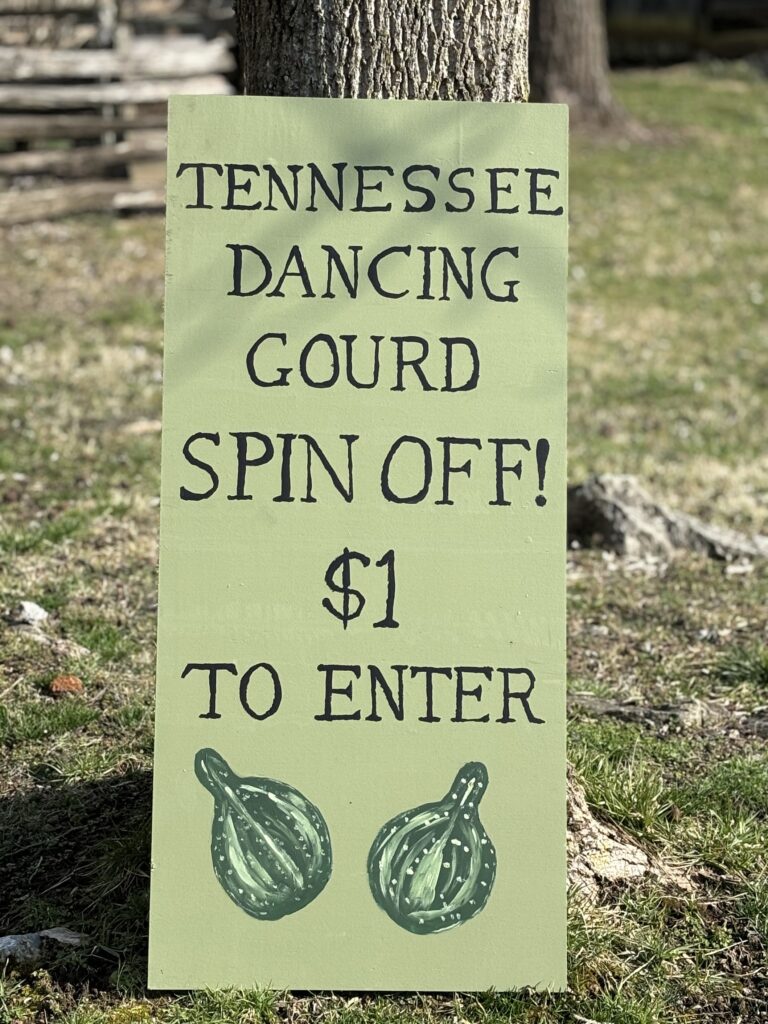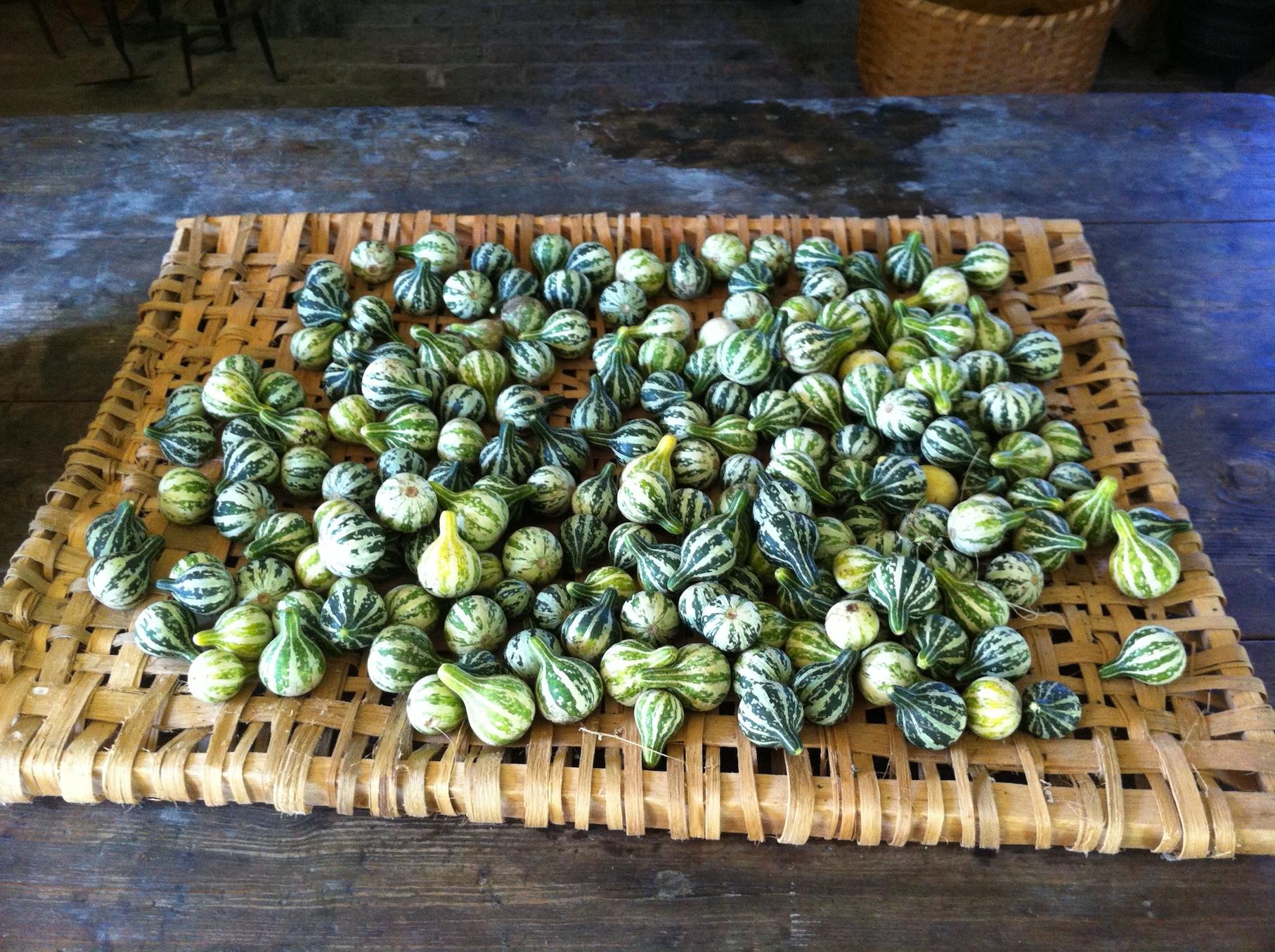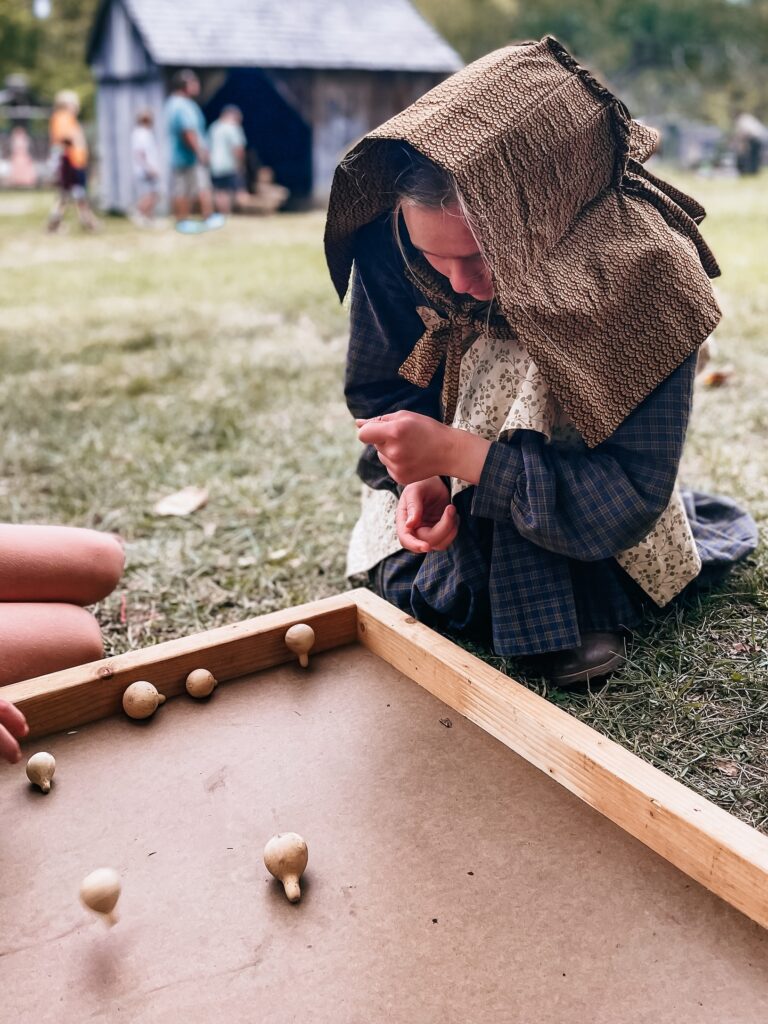
If you were to rank the most popular toys of all time, a top would certainly be at the “top” of the list. For centuries, children have been entertained with these twirling objects that can be powered simply by the snap of two fingers.
The top was undoubtedly a favorite toy of children who lived in the Eden’s Ridge community in the 19th century. The privileged Gaines and Preston children might have had the luxury of playing with fancy store-bought tops, but the children of tenants and enslaved laborers had to make do with what nature provided—what they found in nearby woods, fields, or in their own dooryards and gardens. Their families might have grown a plant that just happens to produce a fruit that is the perfect shape for a top—what we today call the “Tennessee Dancing (or Spinning) Gourd.”
Gourds, of course, have ancient roots, but the exact origin of the Tennessee Dancing Gourd is unknown. It appears to have been grown in the American South since at least the early 1800s (Thomas Jefferson drew a sketch of one in a letter to his granddaughter). The revival of its popularity in the 20th century is often credited to a “Mr. Gordon” of Primm Springs, Hickman County, TN, who remembered playing with the gourds as a child and passed along seeds for others to grow. Once quite rare, seeds for this unique plant can now be purchased from numerous heirloom seed companies like Seed Savers Exchange, Sow True Seed, and Baker Creek Heirloom Seeds.
The Tennessee Dancing Gourd can be very prolific, with a single plant often producing dozens of miniature bottle-shaped gourds whose “necks” fit perfectly between two fingers. If snapped correctly, the gourd can be made to spin impressively on a hard, flat surface. When fresh, the gourds are covered with a beautiful medley of green and white specks and stripes. When dried, they turn a soft brown and can be painted if desired. The gourds spin best in the dried stage.
The Exchange Place Junior Apprentices showcase this primitive toy with their Tennessee Dancing Gourd Spin-Off, held at the annual Spring Garden Fair in April. The spin-off was started two years ago as a replacement for the popular Eden’s Ridge Whimmy-Diddle competition, which came to an end a few years ago. (What’s a whimmy-diddle? That’s a topic for a future article!) For a $1 donation, competitors can choose their own gourd and spin for up to an hour trying to achieve the longest time. Several “heats” will take place during the day, and the winner of each heat will take home a Tennessee Dancing Gourd seedling so they can grow their own “pioneer” tops!



The mission of Exchange Place Living History Farm is to preserve and interpret the heritage of mid-19th century farm life in Northeast Tennessee. A private, non-profit organization, Exchange Place is maintained and operated primarily by volunteers and is supported by donations, fundraisers, memberships, and grants.

Exchange Place
4812 Orebank Rd,
Kingsport, TN 37664
423-288-6071